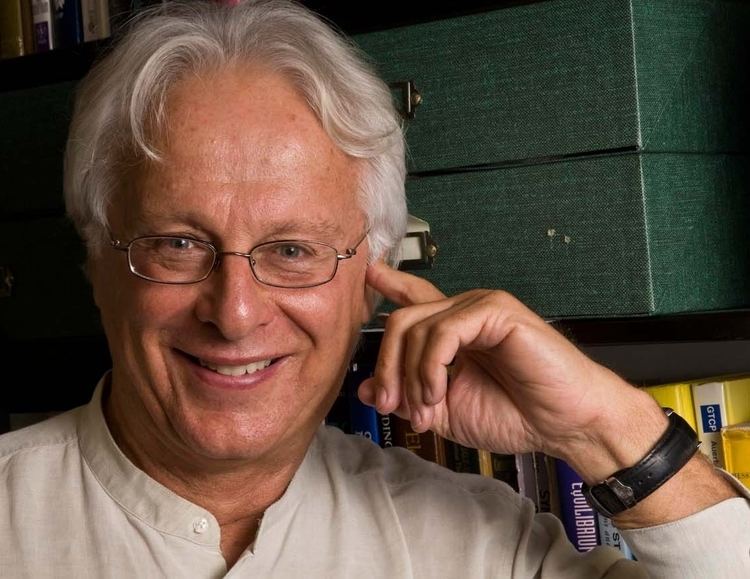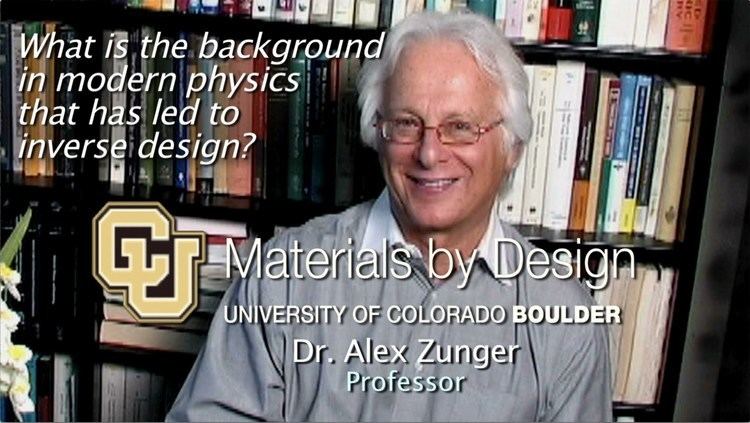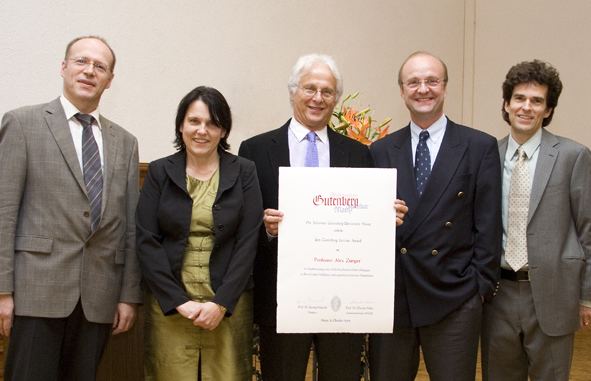Name Alex Zunger | ||
 | ||
Fields Condensed matter theory of real materials Known for Foundational first-principles theory of Electronic structure ;Chief Scientist , Center for Inverse Design; Notable awards 2013 Hume Rothery Award of the TMS 2012 Sackler Fellow, IAS Tel Aviv University 2011 Materials Theory Award of the MRS, 2010 Tomassoni Prize U.of Rome 2009 Gutenberg Award, Mainz University 2001 Bardeen Award of the TMS, 2001 Rahman Award of the APSAPS Fellow, MRS Fellow | ||
What is inverse design alex zunger
Alex Zunger is a professor at the University of Colorado . He has authored more than 170 papers in Physical Review Letters and Rapid Communication, has an h-index over 115, number of citations over 66,000 ; authored the fifth-most cited paper ever to be published in Physical Review since 1893.
Contents
- What is inverse design alex zunger
- Background that has led to inverse design alex zunger
- Work and career
- Organizations and honors
- Publications
- References

Background that has led to inverse design alex zunger
Work and career

Zunger received his B.Sc, M.Sc, and Ph.D. education at Tel Aviv University in Israel and did his post-doctoral training at Northwestern University and (as an IBM Fellow) at the University of California, Berkeley .
Zunger’s research field is the condensed matter theory of real materials. He developed the first-principles pseudopotentials for the density functional theory (1977), co-developed the momentum-space total-energy method (1978), co-developed what is now the most widely used exchange and correlation energy functional and the self-interaction correction (1981), and developed a novel theoretical method for simultaneous relaxation of atomic positions and charge densities in self-consistent local-density approximation calculations (1983). Recently, he developed novel methods for calculating the electronic properties of semiconductor quantum nanostructures. These atomistic methods have enabled Zunger and his team to discover a range of many-body effects underlying the fundamental physics of the creation, multiplication, and annihilation of excitons.
His works have established the fundamental understanding of a wide range of materials phenomena in photovoltaic utilization of solar energy materials. The foundational methods he developed in the quantum theory of solids now form an essential integral part of the worldwide activities in the broad field of “First-Principles Theory of Real Solids.”
In recent years, Zunger has focused on developing the “Inverse Band Structure” concept, whereby one uses ideas from quantum mechanics as well as genetic algorithms to search for atomic configurations that have a desired target property. Zunger also worked on photovoltaic materials, spontaneous ordering in solids (the subject of Zunger’s 2001 Bardeen Award), and quantum nanostructures.
Organizations and honors
In 1978, Zunger established NREL’s Solid-State Theory Group, which he headed until 2011. He has been an NREL Research Fellow, is a Fellow of the American Physical Society, and was the first Director of the DOE Basic Energy Sciences “Center for Inverse Design.” He has also trained 77 post-doctoral fellows. He is the recipient of the inaugural 2011 Materials Theory Award of the Materials Research Society (On the Inverse Band Structure method ), the Hume-Rothery Award of the TMS (on the foundational theory of alloys); the 2010 Tomassoni Prize and Science Medal of the Scola Physica Romana (for Density Functional advances), the 2009 Gutenberg Research Award from Johannes Gutenberg University (on highly correlated physics); the 2001 John Bardeen Prize from TMS (on spontaneous ordering in semiconductor alloys), and the 2001 Rahman Award of the American Physical Society (on the foundations of first-principles pseudopotentials, the total energy in momentum space and the LDA exchange-correlation functional). On May 23, 2011, he resigned from all his posts at NREL
Publications
For the most recent citation report, h-index, etc. view Google Scholar Citations.
The impact of Zunger’s work is partially reflected by the very high number of citations his papers have received (over 66,000, according to the ISI Web of Science) and by his high “h-number” of 115 (i.e., 115 of his papers were cited each at least 115 times). He is the author of the fifth-most-cited paper in the 110-year history of Physical Review (out of over 350,000 articles published in that journal). The chart shows the number of citations to articles published by Zunger for each of the last 20 years.
